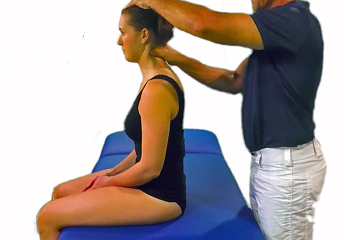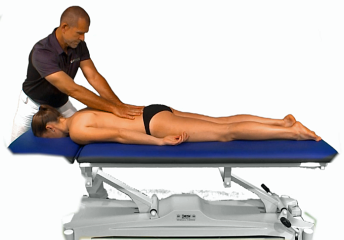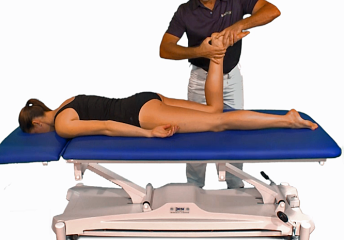M. coracobrachialis
M. CORACOBRACHIALIS
Poloha pacienta: Stojí.
Postavení terapeuta: Stojí bokem na ošetřované straně, za zády pacienta.
Provedení: Terapeut jednou rukou uchopí vzdálenější horní končetinu za paži a svou druhou ruku přiloží na ruku až předloktí pacienta. Vede ji šikmo za záda tak, že ruka je v úrovni intergluteální rýhy – paže je v extenzi a addukci. Předloktí je v mírné flexi a ve středním postavení mezi pronací a supinací (dlaň je obrácena dozadu).
Izometrie: Tlak paže do flexe v ramenním kloubu.
Facilitace: Není.
Inhibice: Není.
M. CORACOBRACHIALIS
Patient position: She is standing.
Position of the therapist: He stands sideways on the treated side, behind the patient's back.
Execution: The therapist grasps the far upper limb by the arm with one hand and places his other hand on the patient's arm up to the forearm. He leads it obliquely behind the back so that the hand is at the level of the intergluteal groove – the arm is in extension and adduction. The forearm is in slight flexion and in an intermediate position between pronation and supination (palm facing backwards).
Isometrics: Arm pressure into shoulder flexion.
Facilitation: It isn't.
Inhibition: It isn't.
SOUVISEJÍCÍ

M. latissimus dorsi, m. teres major

M. serratus anterior

M. triceps brachii

M. biceps brachii

M. coracobrachialis



















